Search
Did you mean: Amphora?
Search Results

Image
Statue of Amun Bakenkhonsu's High Priest
This block limestone statue depicts the high priest of Amun Bakenkhonsu. The statue dates back to the 18th Dynasty of the New Kingdom (1320 BCE) and then it was re-used during the 19th Dynasty (1220 BCE). From Karnak, Thebes, modern-day Egypt...
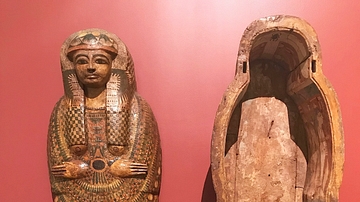
Image
Coffin of the Chantress of Amun
This is the coffin of the "Chantress of Amun," and it dates c. 1070-945 BCE or Egypt's Third Intermediate Period (c. 1070-712 BCE). It is made of wood with a painted gesso relief. Ancient Egyptian coffins sheltered remains and provided a...
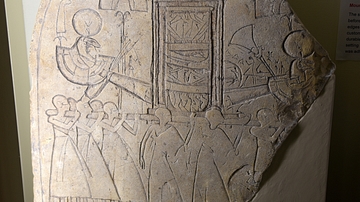
Image
Stela of Amun & Horus the Behdetite
Only part of this limestone stela has survived. The stela depicts a barque of the god Amun carried by priests epithet of Horus the Behdetite. From Koptos (Qift), Egypt. 19th Dynasty, 1292-1187 BCE. The Petrie Museum of Egyptian Archaeology...

Definition
Middle Kingdom of Egypt
The Middle Kingdom (2040-1782 BCE) is considered ancient Egypt's Classical Age during which it produced some of its greatest works of art and literature. Scholars remain divided on which dynasties constitute the Middle Kingdom as some argue...
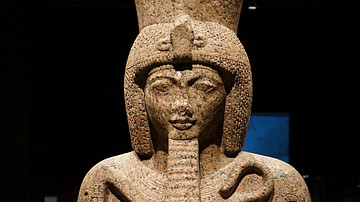
Definition
Pi-Ramesses
Pi-Ramesses (also known as Per-Ramesses, Piramese, Pr-Rameses, Pir-Ramaseu) was the city built as the new capital in the Delta region of ancient Egypt by Ramesses II (known as The Great, 1279-1213 BCE). It was located at the site of the modern...
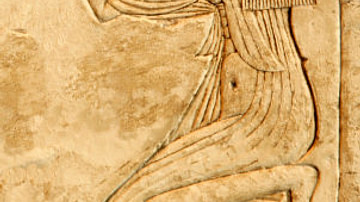
Article
Women in Ancient Egypt
Women in ancient Egypt were regarded as the equals of men in every aspect save that of occupation. The man was the head of the household and nation, but women ran the home and contributed to the stability of that nation as artisans, brewers...

Article
Festivals in Ancient Egypt
The gods of the ancient Egyptians were always apparent to the people through natural events. The sunrise was Ra emerging from the underworld in his great ship, for example, and the moon was the god Khonsu traveling across the night sky. When...

Image
Ramesses III and the God Amun
On this stone stele made around c. 1150 BCE, one can see Ramesses III (r. 1186–1155 BCE) making an offering the god Amun. Ramesses III is considered by many historians and archaeologists to be the last great ruler of Egypt from the New Kingdom...
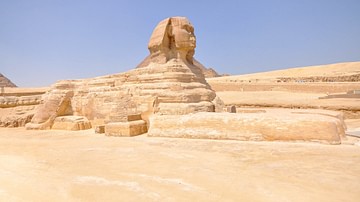
Definition
Ancient Egypt
Egypt is a country in North Africa, on the Mediterranean Sea, and is home to one of the oldest civilizations on earth. The name 'Egypt' comes from the Greek Aegyptos which was the Greek pronunciation of the ancient Egyptian name 'Hwt-Ka-Ptah'...
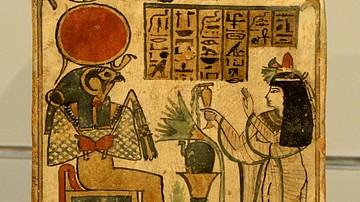
Definition
Ra (Egyptian God)
Ra (also given as Re) is the sun god of ancient Egypt. He is one of the oldest deities in the Egyptian pantheon and was later merged with others such as Horus, becoming Ra-Horakhty (the morning sun), Amun (as noonday sun), and Atum (the evening...